
MOOC: Instrumental analysis of cultural heritage objects
Course introduction
Course description
This online course focuses on the instrumental analysis of cultural heritage objects. The course gives an overview of the most widespread instrumental techniques – both destructive and non-destructive – such as IR and Raman spectroscopy, SEM-EDS, XRF and XRD, ICP-MS, GC-MS, LC-MS, HRMS, etc that are used for the analysis of cultural heritage materials.
As of now, the course is still in the process of completion. However, a number of videos, textual materials, self-tests, etc are already available and you are welcome to start using them. We are adding more materials on a regular basis.
Once finished, the course will provide the basic knowledge and key aspects of different analytical methods focusing on their capabilities for the chemical analysis of cultural heritage as well as archaeological objects and interpretation of the obtained results. The course contains video lectures, textual materials for more thorough reading and numerous tests for self-testing. An important part of the course are practical examples (videos) and useful tips connected with the analysis of cultural heritage materials.
Most of the study materials are freely available from this website without any access restrictions or need for registration and can be used by people who want to study independently and do not intend to follow the full course. Detailed copyright information is at the bottom of this page. Once the course materials will be finished there will be course periods (which require registration) with interaction possibilities with teachers and between participants (on the Moodle platform). During the course period registered participants will have access to the Moodle e-learning environment where they can discuss with each other via forums, have access to additional study materials, incl. case study videos, etc., and can take graded tests.
Course plan and organization
This 1 ECTS course is organized in 6 sections (weeks), of which some topics are in turn split into smaller subsections. The topics covered during these weeks are the following:
- WEEK 1: Course introduction; Optical microscopy
- WEEK 2: Vibrational spectroscopy: IR spectroscopy and Raman spectroscopy
- WEEK 3: Elemental and X-Ray methods: SEM-EDS, XRF, XRD, and (LA)-ICP-MS
- WEEK 4: Chromatography and Mass spectrometry: general aspects
- WEEK 5: Chromatography and Mass spectrometry: in practice
- WEEK 6: Multimethod analysis + case studies
Required preliminary knowledge
Introductory level knowledge of chemistry, cultural heritage, analytical chemistry and analysis methods is an advantage.
Study outcomes
The participant who has successfully passed the course knows:
- the main properties of the materials relevant to the cultural heritage objects;
- general theoretical background of different instrumental techniques;
- what information can be obtained with different instrumental techniques and how to use several techniques in combination for extracting maximum amount of information;
- the main principles of operation of the different instrumental techniques.
The participant who has successfully passed the course is able to:
- choose analytical method suitable for the given analysis task and object at hand;
- interpret the data provided by different methods and extract the necessary information;
- assess the reliability of the obtained results.
Course team
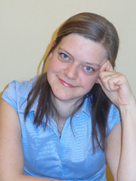 | Signe Vahur, PhD, Associate Professor in Analytical and Physical Chemistry at the Chair of Analytical Chemistry at University of Tartu, Estonia. Team leader and coordinator of this online course. She has specialised in conservation science and analytical chemistry of cultural heritage materials since 2003. She is an expert in ATR-FT-IR spectroscopy and her research interests are investigation of art and archaeological objects and materials using different analytical techniques (ATR-FT-IR, SEM-EDS, MALDI-and APCI-FT-ICR-MS, py-GC-MS, etc.), including chemometric methods (PLS, DA, PCA, etc.). |
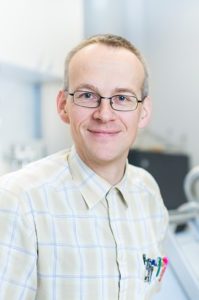 | Ivo Leito, Professor of Analytical Chemistry at University of Tartu. Ivo teaches analytical chemistry and metrology in chemistry at all study levels and organizes short training courses for practitioners on different topics of analytical chemistry and metrology in chemistry. His research work embraces a wide area of topics ranging from studies of superacids and superbases to applications of instrumental methods in analysis of historical objects. He is the initiator and coordinator of the Erasmus Mundus joint master’s programme Excellence in Analytical Chemistry at University of Tartu. |
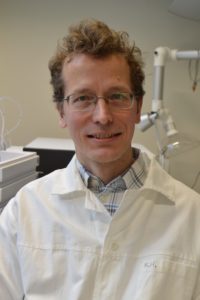 | Koit Herodes, Associate Professor of Analytical Chemistry at University of Tartu. Koit works as an Associate Professor of Analytical Chemistry at UT Institute of Chemistry since 2005. He has been the principal investigator of numerous projects involving LC-MS analyses. Currently he is the PI of the project Development of software for validation of chromatographic methods, which aims at creating web-based software for validation of chromatographic methods. He is the head of the UT Testing centre – a unit providing testing and analysis services and accredited according to ISO 17025 by the Estonian Accreditation Centre since 2008. |
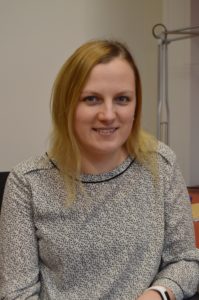 | Anu Teearu-Ojakäär, PhD, Research Fellow at the Chair of Analytical Chemistry, Institute of Chemistry, University of Tartu. Her work mainly focuses on the investigation of resinous materials with different analytical techniques, including ATR-FT-IR, FT-ICR-MS, etc. |
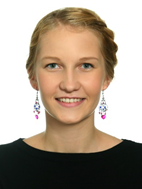 | Pilleriin Peets, PhD, specialist at the Chair of Analytical Chemistry, Institute of Chemistry, University of Tartu. Her research interests are analysis of textiles and dyes with different spectroscopic and mass spectrometric techniques (ATR-FT-IR, LC-MS, ESI-and MALDI-FT-ICR-MS, etc.). |
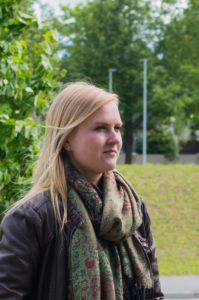 | Eliise Tammekivi, PhD, Research Fellow at the Chair of Analytical Chemistry, Institute of Chemistry, University of Tartu. Her work focuses on the analysis of paint binders with different methods. |
| Ester Oras, PhD, Associate Professor in Laboratory Archaeology, Chair of Laboratory Archaeology, University of Tartu. | |
| Marian Külaviir, MSc, Analyst at Department of Geology, University of Tartu. | |
| Peeter Somelar, PhD, Research Fellow in Geology, Department of Geology, University of Tartu. | |
| Päärn Paiste, PhD, Research Fellow in Geology, Department of Geology, University of Tartu. | |
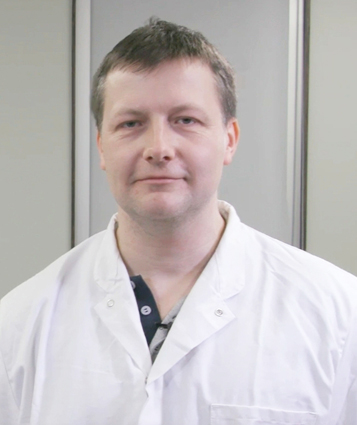 | Valter Kiisk, PhD, Associate Professor in Spectroscopy of Sensor Materials at University of Tartu. Valter is specialized in optical and spectroscopic characterization of materials, mostly inorganic phosphors, thin films and 2D materials. Currently, his work is focused on the development of gas sensor materials. He teaches optics, spectroscopy and scientific computing at various study levels at UT. |
Contact and feedback
Signe Vahur, PhD
Assoc. Prof. in Analytical and Physical Chemistry
Institute of Chemistry
Faculty of Science and Technology
University of Tartu
Ravila 14a, Tartu 50411
ESTONIA
e-mail: signe.vahur@ut.ee
Supported by the Personal Research Fundings PUT1521 (start-up project) and PRG1198 (team grant) from the Estonian Research Council.
Copyright
This learning object is protected by copyright under the copyright law of the Republic of Estonia. Proprietary rights belong to the University of Tartu. It is allowed to reproduce, distribute and perform the learning object in public only for learning and teaching. The learning object can be used only as a whole, except in the case of citation. The learning object cannot be used for commercial purposes and all usage has to be accompanied by a sufficient acknowledgement. It is not allowed to modify or make an adaptation of the learning object.


